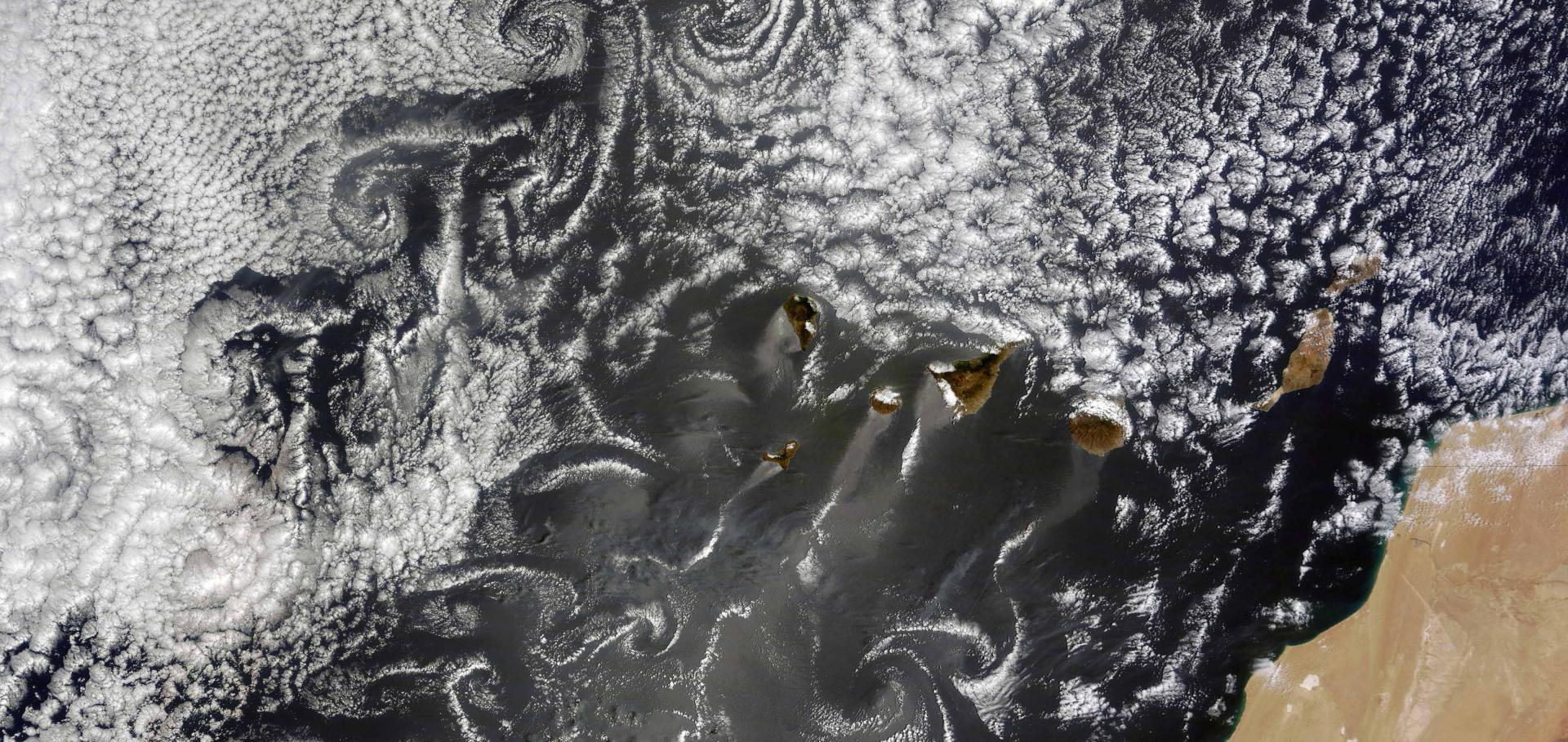Uncertainty from the choice of microphysics scheme in convection-permitting models significantly exceeds aerosol effects
Atmospheric Chemistry and Physics Copernicus GmbH 17:19 (2017) 12145-12175
Abstract:
<jats:p>Abstract. This study investigates the hydrometeor development and response to cloud droplet number concentration (CDNC) perturbations in convection-permitting model configurations. We present results from a real-data simulation of deep convection in the Congo basin, an idealised supercell case, and a warm-rain large-eddy simulation (LES). In each case we compare two frequently used double-moment bulk microphysics schemes and investigate the response to CDNC perturbations. We find that the variability among the two schemes, including the response to aerosol, differs widely between these cases. In all cases, differences in the simulated cloud morphology and precipitation are found to be significantly greater between the microphysics schemes than due to CDNC perturbations within each scheme. Further, we show that the response of the hydrometeors to CDNC perturbations differs strongly not only between microphysics schemes, but the inter-scheme variability also differs between cases of convection. Sensitivity tests show that the representation of autoconversion is the dominant factor that drives differences in rain production between the microphysics schemes in the idealised precipitating shallow cumulus case and in a subregion of the Congo basin simulations dominated by liquid-phase processes. In this region, rain mass is also shown to be relatively insensitive to the radiative effects of an overlying layer of ice-phase cloud. The conversion of cloud ice to snow is the process responsible for differences in cold cloud bias between the schemes in the Congo. In the idealised supercell case, thermodynamic impacts on the storm system using different microphysics parameterisations can equal those due to aerosol effects. These results highlight the large uncertainty in cloud and precipitation responses to aerosol in convection-permitting simulations and have important implications not only for process studies of aerosol–convection interaction, but also for global modelling studies of aerosol indirect effects. These results indicate the continuing need for tighter observational constraints of cloud processes and response to aerosol in a range of meteorological regimes. </jats:p>On the spatio-temporal representativeness of observations
Atmospheric Chemistry and Physics Copernicus Publications 17:16 (2017) 9761-9780
Abstract:
The discontinuous spatio-temporal sampling of observations has an impact when using them to construct climatologies or evaluate models. Here we provide estimates of this so-called representation error for a range of timescales and length scales (semi-annually down to sub-daily, 300 to 50 km) and show that even after substantial averaging of data significant representation errors may remain, larger than typical measurement errors. Our study considers a variety of observations: ground-site or in situ remote sensing (PM2. 5, black carbon mass or number concentrations), satellite remote sensing with imagers or lidar (extinction). We show that observational coverage (a measure of how dense the spatio-temporal sampling of the observations is) is not an effective metric to limit representation errors. Different strategies to construct monthly gridded satellite L3 data are assessed and temporal averaging of spatially aggregated observations (super-observations) is found to be the best, although it still allows for significant representation errors. However, temporal collocation of data (possible when observations are compared to model data or other observations), combined with temporal averaging, can be very effective at reducing representation errors. We also show that ground-based and wide-swath imager satellite remote sensing data give rise to similar representation errors, although their observational sampling is different. Finally, emission sources and orography can lead to representation errors that are very hard to reduce, even with substantial temporal averaging.On the spatio-temporal representativeness of observations
Atmospheric Chemistry and Physics European Geosciences Union (EGU) (2017)
Strong constraints on aerosol-cloud interactions from volcanic eruptions
Nature Springer Nature 546:7659 (2017) 485-491
Abstract:
Aerosols have a potentially large effect on climate, particularly through their interactions with clouds, but the magnitude of this effect is highly uncertain. Large volcanic eruptions produce sulfur dioxide, which in turn produces aerosols; these eruptions thus represent a natural experiment through which to quantify aerosol–cloud interactions. Here we show that the massive 2014–2015 fissure eruption in Holuhraun, Iceland, reduced the size of liquid cloud droplets—consistent with expectations—but had no discernible effect on other cloud properties. The reduction in droplet size led to cloud brightening and global-mean radiative forcing of around −0.2 watts per square metre for September to October 2014. Changes in cloud amount or cloud liquid water path, however, were undetectable, indicating that these indirect effects, and cloud systems in general, are well buffered against aerosol changes. This result will reduce uncertainties in future climate projections, because we are now able to reject results from climate models with an excessive liquid-water-path response.Evaluating the diurnal cycle in cloud top temperature from SEVIRI
Atmospheric Chemistry and Physics Copernicus GmbH 17:11 (2017) 7035-7053


